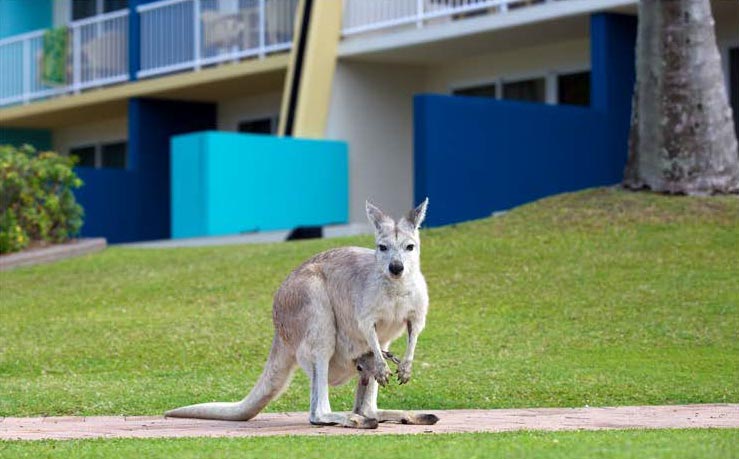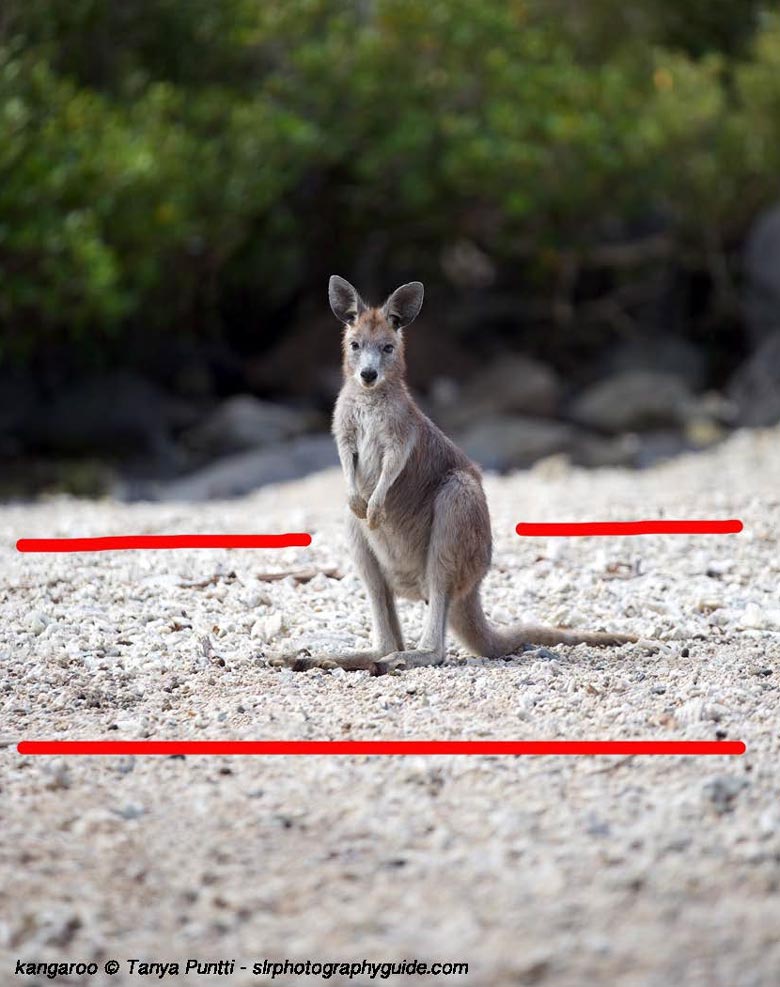Telephoto lens, such as a 70-200 mm, not only makes your main subject appear much larger in the frame. A telephoto lens also helps foreground and background elements appear much closer together. Or rather compresses the foreground and background together.
Take the giraffe image below for example. This image was taken at Taronga Zoo in Sydney, Australia. What you see in the background is the CBD across the other side of the harbour, much further away in reality than what it seems.
My goal for this photo was to show that it was in fact a city zoo. Through the use of a telephoto lens, the giraffe and city appear much closer. Had I used a wide angle lens of say 20mm, the impact of the city would have been reduced significantly. The relationship between the two would have been lost on the viewer.
Telephoto lens used on image of kangaroo in front of holiday accommodation
The client, Daydream Island Whitsundays, wanted to show international visitors that Australian animals are easily accessible to all guests. Using a telephoto lens compressed the main subject and background building much closer together, so the relationship between the two can more easily be made.
Some of you might now be thinking, well that’s all true and good, but what if I want to capture more of the scene into one frame? Wouldn’t I need a wide angle lens for that? Not necessarily, you could always simply walk back several meters. This would enable you to capture more of the scenery, yet still have that fabulous telephoto effect of compressing near and far subjects closer together. It is much easier to blur elements of an image with a telephoto lens, than it is with a wide angle lens.
Depth of Field
Depth of field (DOF) refers to the area of an image that appears sharp! It is not a fixed distance, but rather changes in size depending on the aperture setting and focal length of the lens. Longer lenses create more blur than wide lenses. For example, you will notice more blur with the telephoto lens zoomed to 200mm focal length than you would if you set it at 18mm.
The kangaroo below was taken with a 200mm focal length and an aperture of F/2.8. I set a single focal point, aiming it right at the eye. Hence blur seen in both the foreground and background (refer to chart below). Had I set an aperture of F/5.6, there would be just a sliver more area of sharpness seen in both the foreground and background.
The point being, there would still be blur, which decreases the higher you set your aperture number. Had I used a wide angle lens, for example 18mm, much more of the scenery would be in sharp focus. Remember, how much blur you see depends on the length of the lens (longer lens= more blur) and the aperture number (lower aperture number= more blur).
Note: The following chart will be included in the cheat sheets for those taking our online photography course. Dark green areas show how much of the shot appears sharp. If you want to purchase the “Cheat Sheets” separately click here:



